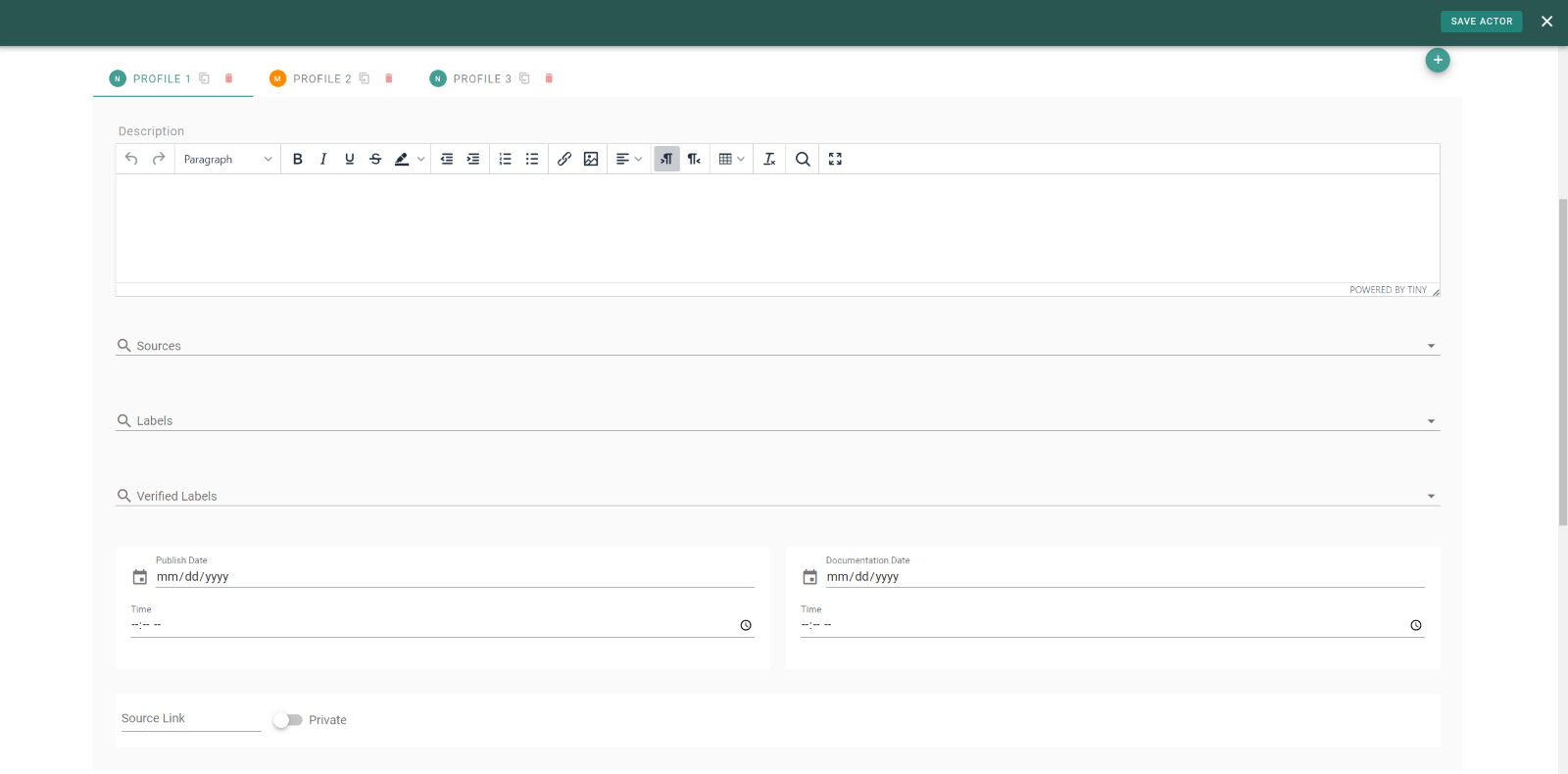Bayanat's New Actor Profiles
Bayanat's precisely crafted data structure is tailored for documenting, analyzing, and investigating violations of human rights and international humanitarian law. Despite its robust framework—organized into three core sections: Actors, Bulletins, and Incidents—managing information about the same Actors from numerous, diverse sources presented significant challenges. These scattered profiles often made it difficult to see connections or the full picture of a person's or an entity's involvement, highlighting the pressing need for a solution like the new Actor Profile.
Actors serve as a detailed repository of individuals, groups, or entities involved in human rights cases in different capacities (e.g., perpetrators, injured parties, etc.). The Actor data structure allows for meticulous documentation of all relevant information about these actors, ensuring it is standardized and can be used in any context or region.
Bulletins are pieces of documentation that could come from almost any type of content, such as videos, audio, pictures, documents, interviews, reports, text files, etc. This central hub acts as the platform's core, preserving all types of evidence related to cases.
Incidents are folders where the evidence of a violation, analyzed in Actors and Bulletins, can be grouped and organized. This section seamlessly interlinks with other data sections, facilitating easy and comprehensive case building.
While this structured approach offers undeniable benefits, it also presented certain challenges, particularly when managing information about the same Actors from numerous, diverse sources. Frequently, discrepancies and different versions of events emerged between sources about the same person or entity. Although confirming that multiple profiles referred to the same person or entity was usually straightforward, the process was cumbersome. Relating the actors to each other and determining the most credible information required switching between different profiles multiple times for comparison.

This innovative solution empowers analysts to seamlessly update and incorporate additional information into existing Actors. It allows for the creation of multiple profiles within the same Actor, each drawing from different sources, streamlining information collection and analysis while preserving data integrity.
The section is seamlessly integrated within the Actors section, enabling the creation of numerous "profiles" for each Actor based on available information. A ‘Missing Persons’ profile is also available, which allows the user to create an extended profile that can store detailed information about a person’s physical traits, medical and family history as well as circumstances around their disappearance. Lastly, a dedicated "Main Profile" allows for the verification and consolidation of the information for all profiles, providing a clear and comprehensive overview of the Actor.
The Actor Profile design offers significant benefits for human rights investigators. By consolidating information from diverse sources into one centralized location, it enhances efficiency and streamlines information collection and analysis. This approach also improves accuracy, enabling investigators to create comprehensive profiles with confirmed information while minimizing potential errors. The design also brings greater clarity to investigations, providing a structured view of all information related to an actor. This holistic approach facilitates deeper understanding and case building. Ultimately, this new format demonstrates Bayanat's ongoing commitment to providing human rights defenders and investigators with cutting-edge resources to support their vital work in upholding human rights.
For more information, or to request a demo of Bayanat, email us at info@bayanat.org
